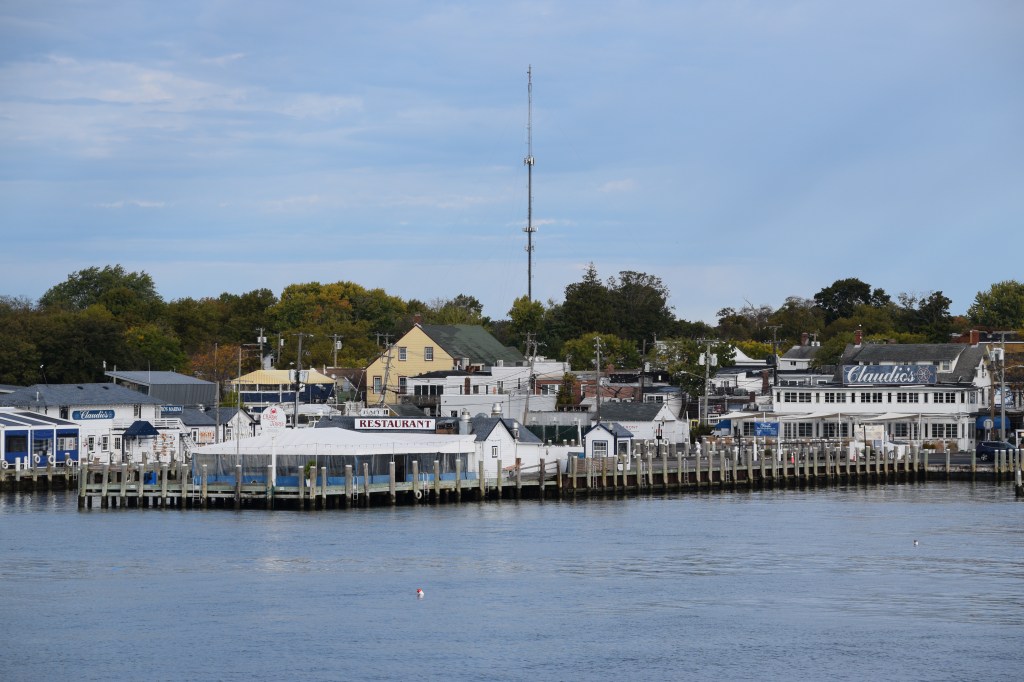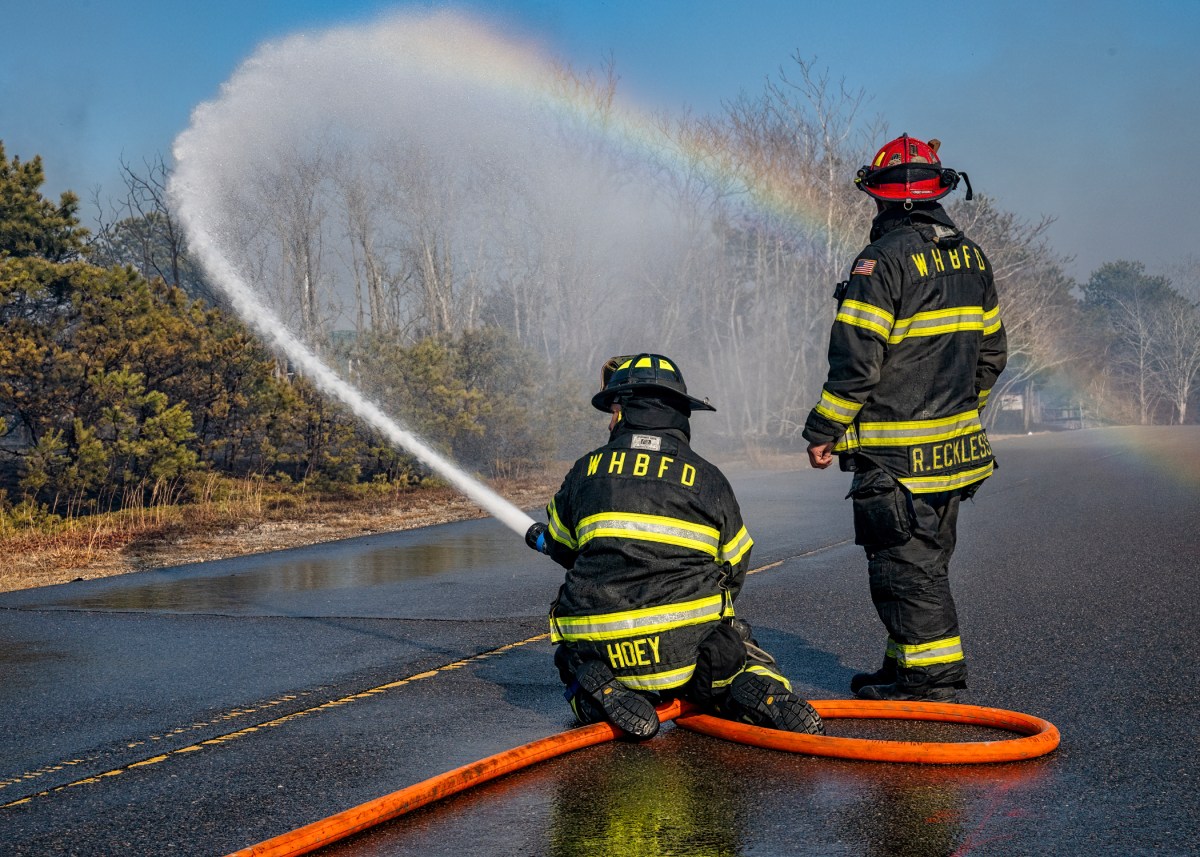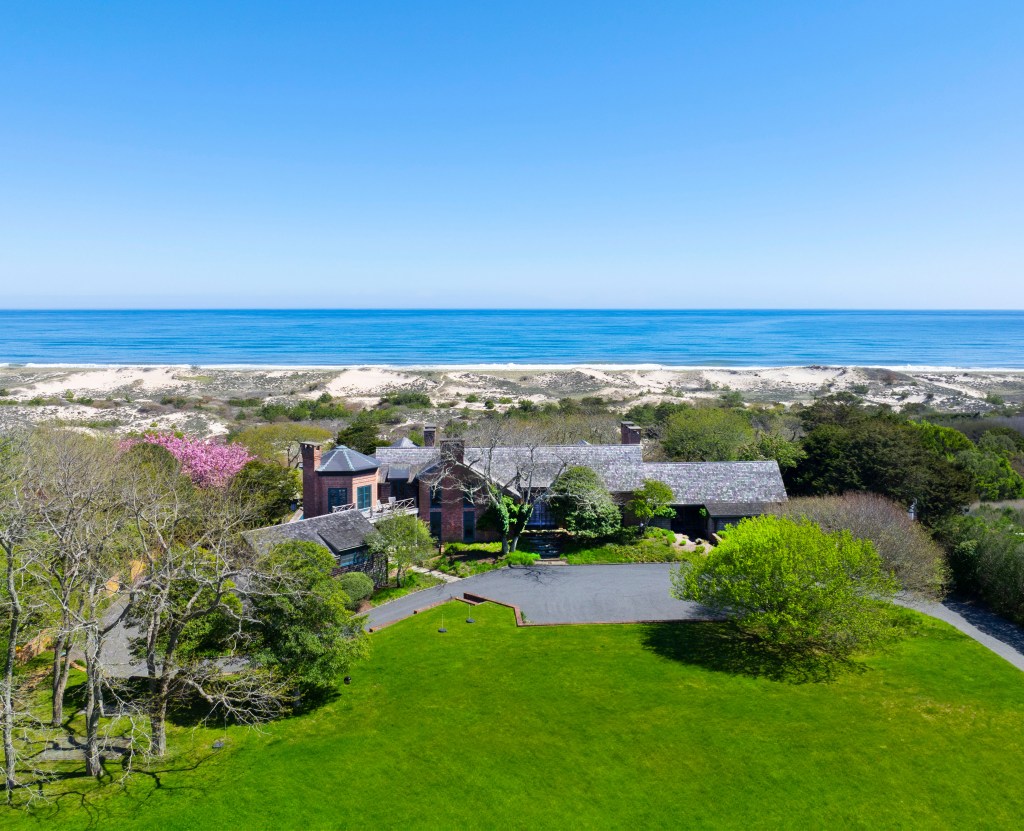Fort Tyler: Historic Fortress Bombed into Ruins

When you travel to most seaside resorts around the world, you often come upon old forts built right on the water in the 17th or 18th century to defend the civilian population from pirates and other marauders. The forts are properly restored, with photographs or paintings of the cannons of the fort in action beating off the ships of those up to no good. They are tourist attractions.
As it turns out, the Hamptons had such a fort. It was called Fort Tyler and it was built by the U.S. Army on a small 14-acre island called Gardiner’s Point Island in East Hampton in 1898 at a time when America was embarking on its first international conflict with a major foreign power, Spain. The main action was in Cuba, where the Spanish were driven out, but other actions took place in Manila Harbor in the Philippines and in Guam, but if the Spanish fleet were going to attack New York City, it would have to first get past the four or six batteries manned by the Army on the ramparts of Fort Tyler.
As it happened, Fort Tyler never fired a shot in anger at anybody. In 1902, after the Spanish-American War ended, it was “seized” by U.S. Naval forces in a war game between the U.S. Army and the U.S. Navy, which returned it to the U.S. Army. In 1928 it was abandoned because of rising seas, in 1938 all of Gardiner’s Point Island was declared a Bird Sanctuary by President Franklin D. Roosevelt, and what remained of the fort was bombarded into ruins by U.S. Navy submarines firing torpedoes and U.S. Air Force four-engine bombers dropping bombs in training missions during the Second World War.
The sailors and airmen learned their lessons well. We won that war.
Today, Fort Tyler is called, simply, The Ruins, and it needs to be avoided by mariners at all costs. The remains of the fort are not only a danger to navigation, but it is believed there may still be unexploded ordinance in the rubble after all these years.
So there is never going to be a Fort Tyler Historical Society offering tours there.
The federal government became involved in what was to become this fort 10 years before the outbreak of the Civil War. At that time, all of Gardiner’s Island was a private island owned by the Gardiner Family as it is today and as it had been since 1639. In 1851, however, a long thin peninsula stuck out the northern end of the island, ending 400 yards into the sea at a place where the government felt would be a good location for a lighthouse. The government bought the tip of that peninsula for $400 from the Gardiners. The government spent four years and $7,000 to construct a lighthouse, called Gardiner’s Point Lighthouse, at the tip to warn mariners. It was one-and-a half stories tall, made of stone and brick, and had a Fresnel lens in a glass lighthouse room at the top, 33 feet above the sea.
The Great White Hurricane of 1888 permanently cut that long peninsula and badly damaged the lighthouse. What remained was an abandoned lighthouse on a small 14-acre island, which was now renamed Gardiner’s Point Island. In disrepair, this lighthouse quickly went to ruin. It fell into the sea in 1894.
Four years later, as the Spanish-American War was looming, the military stepped in and built Fort Tyler on this island. It was named in honor of President John Tyler, who married Julia Gardiner, age 24, while in the White House. Julia was born on Gardiner’s Island.
The batteries of this fort held eight-inch guns, the sort of guns that could battle the eight-inch guns of cruisers and battleships of that era.
Fort Tyler, as mentioned, never fired a shot in anger. But in early September of 1902, a large-scale war game was held, pitting the Army against the Navy along the Connecticut, Block Island and Long Island coastlines. The Army defended from their forts. The Navy attacked from their battleships on a Monday. All was done with blank explosions, searchlights and flags.
The successful attack by the Navy on Gardiner’s Point is mentioned as part of the action during the first day of the games. The fleet had come out from Narragansett Bay and had taken the army by surprise on Block Island. They thus were able to make that their home base.
“(The battle) continued on Tuesday, when the larger ships bombarded Plum Island and Gardiner’s Point, and again on Wednesday when the four battleships made a descent on Fort Wright at Fisher’s Island,” a reporter wrote for The New York Times.
The fort on Plum Island was called Fort Terry, after a Civil War General and Military Commander of the Dakota Territory named Alfred Howe Terry, but that was on the North Fork—and is another story. Battleships mentioned in the war game include the Kearsarge and the Alabama. The article about the war game appeared in The New York Times under the headline DISGUISED GUNBOAT TORE UP ARMY MINES and was published on September 7, 1902.
I mentioned at the beginning of this article that what became Gardiner’s Point Island was 14 acres in the 19th century. It is on a much smaller piece of land today. I was curious about how this long piece of Gardiners Island came to be detached. Was the land sinking? Was the tide rising?
Seems that it was a little bit of both. The peninsula, as with a similar one that sticks out the southern end of Gardiner’s Island, is mostly made of sand, so it seems to have been washed away. On the other hand, sea level is rising.
I noticed in an article the other day where Kevin McAllister, our Baykeeper, was quoted, that he said that sea level has already risen one foot. And that is true. But going to a scientific site where global sea level is being monitored, I learned this one-foot rise has taken place over the last hundred years. In 1910, the sea was one foot lower than it is in 2013.
Furthermore, the rise, between then and now has been at a steady pace. Every 10 years it rises one inch. And this past 10 years, it is the same inch rise as was 90 years ago. There’ve been numbers bandied about that we will have a rise in sea level of two or three feet soon. But soon means 2113 and 2213, respectively.
The real issue today, however, is in the short-term rises and falls. Back in 1910, the rise was slow and steady. Now, it jumps all over the lot. Although it will be one inch every year on average, some years it might rise two inches, but the next year fall back three quarters of an inch. This wild variation is part of the syndrome of temperature, storms, tsunamis, hurricanes and earthquakes that vary so much as to cause havoc.
I know this information has very little to do with Fort Tyler other than as an explanation for the disappearance of its peninsula. Just consider this article as a twofer. And again, the Fort’s gone. And it ain’t coming back.



